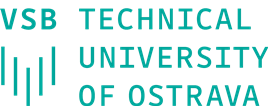Using a ground-breaking scientific process to develop new materials to generate green energy or reduce atmospheric carbon dioxide emissions, and to show how to end dependence on fossil fuels and prevent possible energy and climate crises in the future.
With this plan, scientists from the Czech Institute for Research and Advanced Technologies – CATRIN at Palacký University in Olomouc and the Centre for Energy and Environmental Technologies – CEET at the VŠB-Technical University of Ostrava (VŠB-TUO), together with world-renowned research teams from Germany and Italy, are embarking on a three-year, €1.5 million European project, which started today in Olomouc.
The scientific part of the project will focus on the production of hydrogen by solar water splitting, the electrochemical conversion of waste carbon dioxide and, in particular, engineering at the level of individual atoms. This approach is expected to enable the development of new materials that will significantly increase the production of green hydrogen or advance the possibilities of transforming carbon dioxide into useful chemicals with high added value.
“In an international team, we want to develop technologies that allow the anchoring of single atoms to the surface of suitable semiconductors and control the chemical and electronic properties of these atoms. The results show that this new approach, based on so-called atomic engineering, allows a several-fold increase in the efficiency of the materials used for the photocatalytic and photoelectrochemical conversion of solar energy into hydrogen, which is crucial for the deployment of green fuel technology. Atomic engineering is attracting increasing interest from researchers worldwide, but we are among the pioneers in its use for these energy and environmental applications,” said the project’s principal investigator, Štěpán Kment of CATRIN.
Researchers from both domestic universities have joined forces with European leaders in the field of green energy generation. One of them is Patrik Schmuki’s team from Friedrich-Alexander University in Erlangen, Germany. The scientist, who also works at CATRIN, has long been researching the production of hydrogen, the so-called fuel of the future, using water, solar energy and semiconductor nanomaterials. “Engineering at the level of single atoms is a direction that could change many fields of science in the future. Our results show that it is in the field of solar-powered renewable energy that materials enriched with suitable atoms can make a major breakthrough in increasing hydrogen production,” Schmuki confirmed.
The research team also wants to focus on the computational design of materials and understanding how they work. They will use the unique supercomputer at VŠB-TUO, one of the most powerful in Europe, to model the processes. “We want to use computational chemistry approaches to understand the mechanism by which individual atoms increase the efficiency of key photochemical and photoelectrochemical processes and, based on this knowledge, optimise a new generation of materials for the energy industry. In the experimental part, we will focus in Ostrava on the possibilities of atomic engineering for photochemical conversion and removal of carbon dioxide, whose worldwide production contributes significantly to global climate change,” explained Radek Zbořil from VŠB-TUO.
A team from the University of Trieste, Italy, will also be addressing this global challenge, i.e. reducing carbon dioxide emissions, with the help of a unique device using synchrotron X-rays to describe the structure of materials. The team, led by renowned electrocatalysis expert and author of several ground-breaking papers in the journal Science, Paolo Fornasier, will study the possibilities of electrochemical conversion of carbon dioxide. “Carbon dioxide can be converted electrochemically into useful chemicals or energy sources such as formic acid, carbon monoxide, ethylene, ethanol or methane using suitable nanomaterials. We will focus on graphene-based nanomaterials enriched with suitable metals, which have been prepared in the past by colleagues in Olomouc and Ostrava. Our joint effort will be to increase the conversion efficiency and develop new monoatomic materials so that carbon dioxide valorisation technologies can find application in real practice,” said Fornasiero.
In addition to concrete scientific results, collaboration within the international team and sharing of experience is an important part of the project. These activities will be supported by planned exchanges, summer schools and joint workshops. A total of 21 countries shared around 100 grants in last year’s TWINNING call (HORIZON-WIDERA-2021-ACCESS-03-01). Nine projects were awarded to Czech research teams and universities.


